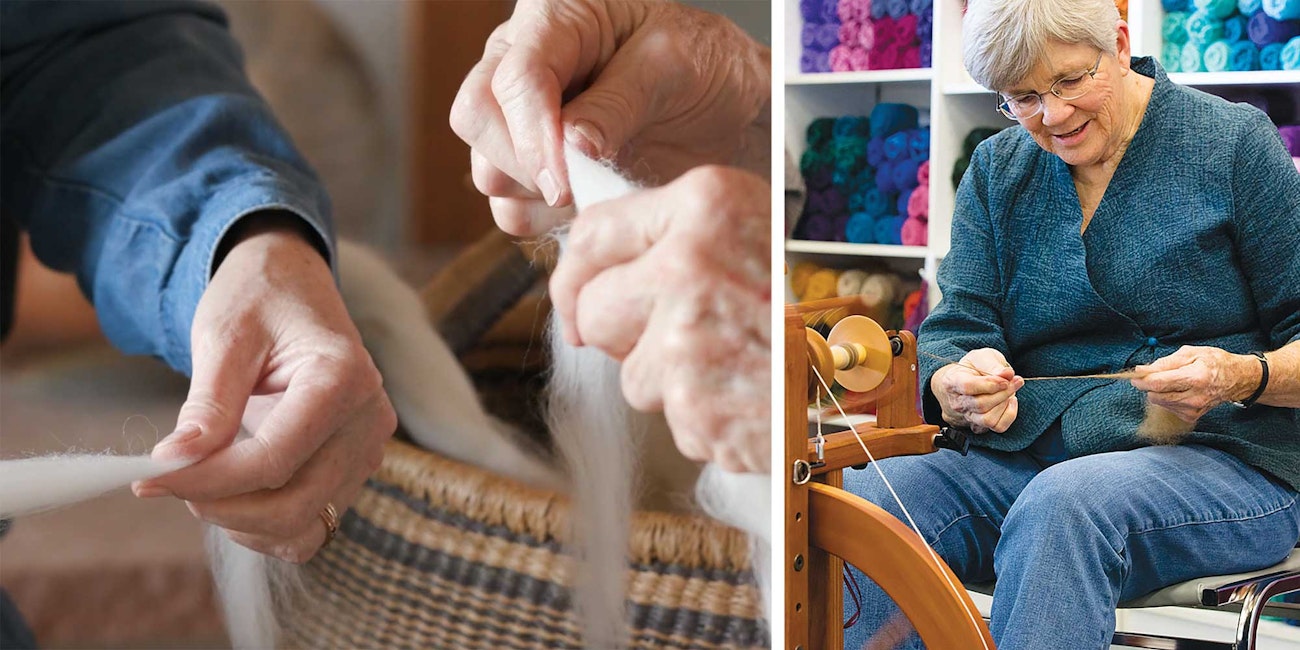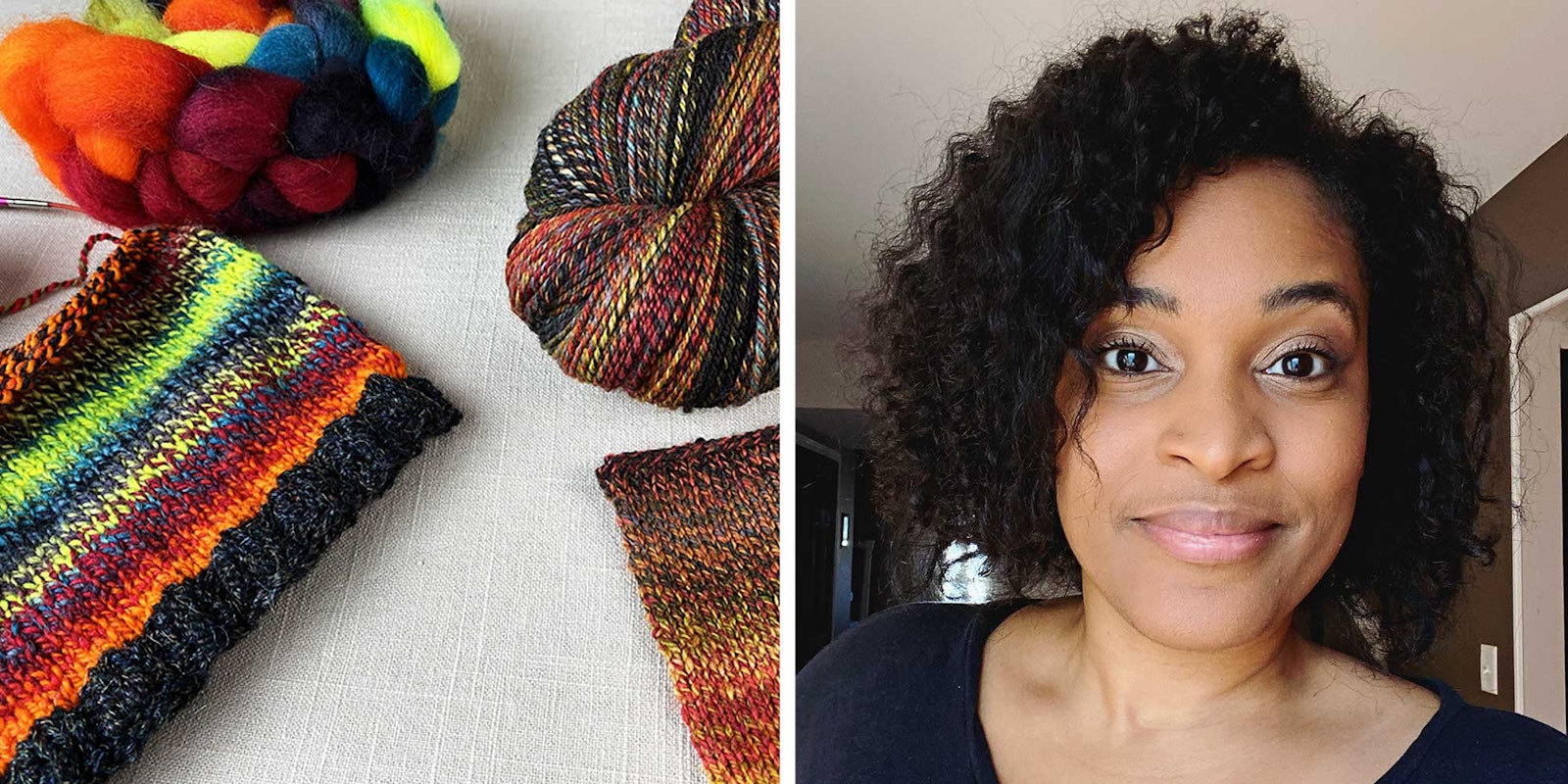As the Spin Off team continues to prepare for this fall’s SOAR event (the 2023 Spin Off Autum Retreat), we’ve got our eye on a few of the instructors who will be taking a deep dive into some interesting and helpful techniques in their workshops. We asked them to share just a few of the many amazing tips they will be sharing with SOAR students later this year. I hope the tips that follow will pique your interest as much as they have mine! See you at SOAR!
—Debbie Blair, Spin Off associate editor
Heavenly Bresser
Heavenly’s passions include the love for working with color in her fiber work, and she will share that passion during two of her SOAR classes on blending and spinning with fractals. Here are two of Heavenly’s favorite tips for using color in your spinning:
Tip #1: Freedom to Explore
Often times, we (spinners) chose colors to process and spin based on how “great” someone says it looks on us or simply because we have that one favorite color we don’t ever want to leave out. It is often the colors that I would never chose for my wardrobe that have brought me the most discoveries while processing and spinning. This is especially true for fractal spinning and other spinning techniques. The very colors I had once loathed have worked their way into some of my favorite color combinations. Embrace the process and prepare for new discoveries!
Tip #2: How Much Color to Use When Creating a Colorway
When I have colors in mind that I want to use for fractals, I will often take a look at one of my color wheels to see if there are any color relationships I’d like to embrace. Then I grab a set of colored pencils and a blank page in my drawing pad. I find that visualizing a potential colorway on paper can be helpful before moving forward with fiber. I create small rectangles, representing each color I want to use. Each rectangle is initially the same size, and these are placed side by side to make one long rectangle. Next, I draw another set of rectangles directly underneath the first set. This time I adjust the size of each individual rectangle to show varying proportions of each color. For example, if working with 5 colors for a colorway, my first set of rectangles are all the same size representing 20% of each color. For the new set below, the rectangles will be longer (or shorter) to represent, for instance: 60% color A, 5% color B, 10% color C, 20% color D, and 5% color E. I continue drawing rectangles until I am satisfied with the proportions and arrangement of the colors.
Maggie Casey
 Curious whether or not predrafting is necessary? Join Maggie Casey at SOAR as she discusses the pros and cons of predrafting. Photos by George Boe
Curious whether or not predrafting is necessary? Join Maggie Casey at SOAR as she discusses the pros and cons of predrafting. Photos by George Boe
Maggie believes predrafting is a useful technique for spinners to have in their toolbox. She will be teaching The Pros and Cons of Predrafting. Here, we share a few of our favorite tips from Maggie about the art of predrafting:
Tip #1: Learning the Moves
Predrafting gives the hands a chance to learn their moves before twist is added to the fibers. Careful fiber preparation is a most important part in making a pleasing yarn, and the time preparing the fiber is always time well spent.
Tip #2: Fiber Characteristics
If you pay attention during predrafting, you will learn a lot about your roving: how long the fibers are, how fine or how coarse, and whether they are smooth and slippery or a little textured and grabby. The more you know about the fiber, the easier it will be to spin.
Tip #3: Color Exploration
I’ve fallen in love with the color blends that can be achieved by predrafting multicolored drumcarded batts. Another lovely color blend occurs when you hold several colors of roving together and predraft them.
Devin Helmen
 Devin’s class will demonstrate how longdraw spinning on a spindle can be comfortable, speedy, and fun with a bit of practice. Photos courtesy of Devin Helmen
Devin’s class will demonstrate how longdraw spinning on a spindle can be comfortable, speedy, and fun with a bit of practice. Photos courtesy of Devin Helmen
Devin will be teaching Spindle-Spun Longdraw this fall, and can often be seen spinning longdraw on a spindle while chatting at gatherings or out walking at fiber retreats. Devin offers these tips for spinning in this way:
Tip #1: Control Your Fiber Supply
One of the best things you can do to make spindle spinning a good experience is to keep control of your fiber supply. There are several ways of doing this. If using commercial top, you can tuck it into a wrist distaff or wrap it around your arm. You can also break off small lengths of the top (about 8" long) and just spin each length, joining a new one whenever the first one runs out. This works equally well for rolags. If you keep longer lengths of fiber uncontrolled it is easy for the fiber to catch on the yarn that’s in progress, tangling it or inadvertently corespinning. By keeping your fiber under control, you can avoid tangles and the resulting frustration.
Tip #2: Cop Management
Wrap your yarn on the spindle shaft in a crisscross pattern and build it up into a cone or football shape. This will keep the cop more secure on the spindle shaft. Do not be tempted to keep building the cop after the spindle becomes unpleasantly heavy; not only will this make it harder to spin an even thickness, it will also tire your arms. It is far kinder to both your body and your yarn to wind off frequently. If you want a longer length of yarn than a spindle comfortably holds, try this: Wind off the first spindle into a ball and resume spinning. When the spindle is full again, join the end of the newly spun single to the end of the wound ball and unwind the second spindle.
Amy Tyler
 Remove the mystery from drive mechanisms, drive ratios, drafting, twist, take-up tension, and wheel maintenance during Amy Tyler’s class. Photo (left) by Anita Osterhaug
Remove the mystery from drive mechanisms, drive ratios, drafting, twist, take-up tension, and wheel maintenance during Amy Tyler’s class. Photo (left) by Anita Osterhaug
Amy’s background in modern dance, kinesiology, and physiology gives her a keen understanding of movement and motion, which she applies to understanding the spinning wheel and the act of spinning. Amy will be teaching a course on the mechanics of your spinning wheel and offers these tips on drive bands:
Tip #1: Replace Your Band for Easier Treadling
The benefit of a new band is increased friction between drive-wheel groove and drive band, resulting in decreased slippage; this allows you to reduce the tension on the drive band to make it easier to treadle. While it’s tempting to just keep spinning with that old, stretched drive band, your body and your wheel will be grateful for a fresh band.
Tip #2: Explore Different Materials
Exploring different band materials can help you learn about your wheel and fine tune it for your needs. It is easy to get cotton string or twine at a hardware store, and it comes in a variety of thicknesses. I usually have a couple of thicknesses on hand so that I can make decisions about which to use depending on the wheel in question.
Learn more from these four renowned instructors (and many more) live and in-person later this year at SOAR 2023 in Loveland, Colorado. A limited number of tickets remain, and you can learn more about the instructors, workshops, and event, at spinoffretreat.com.
Debbie Blair is the associate editor of Spin Off magazine. A lifelong crafter and avid reader, she finds her happy place reading and relaxing next to a mountain stream.

